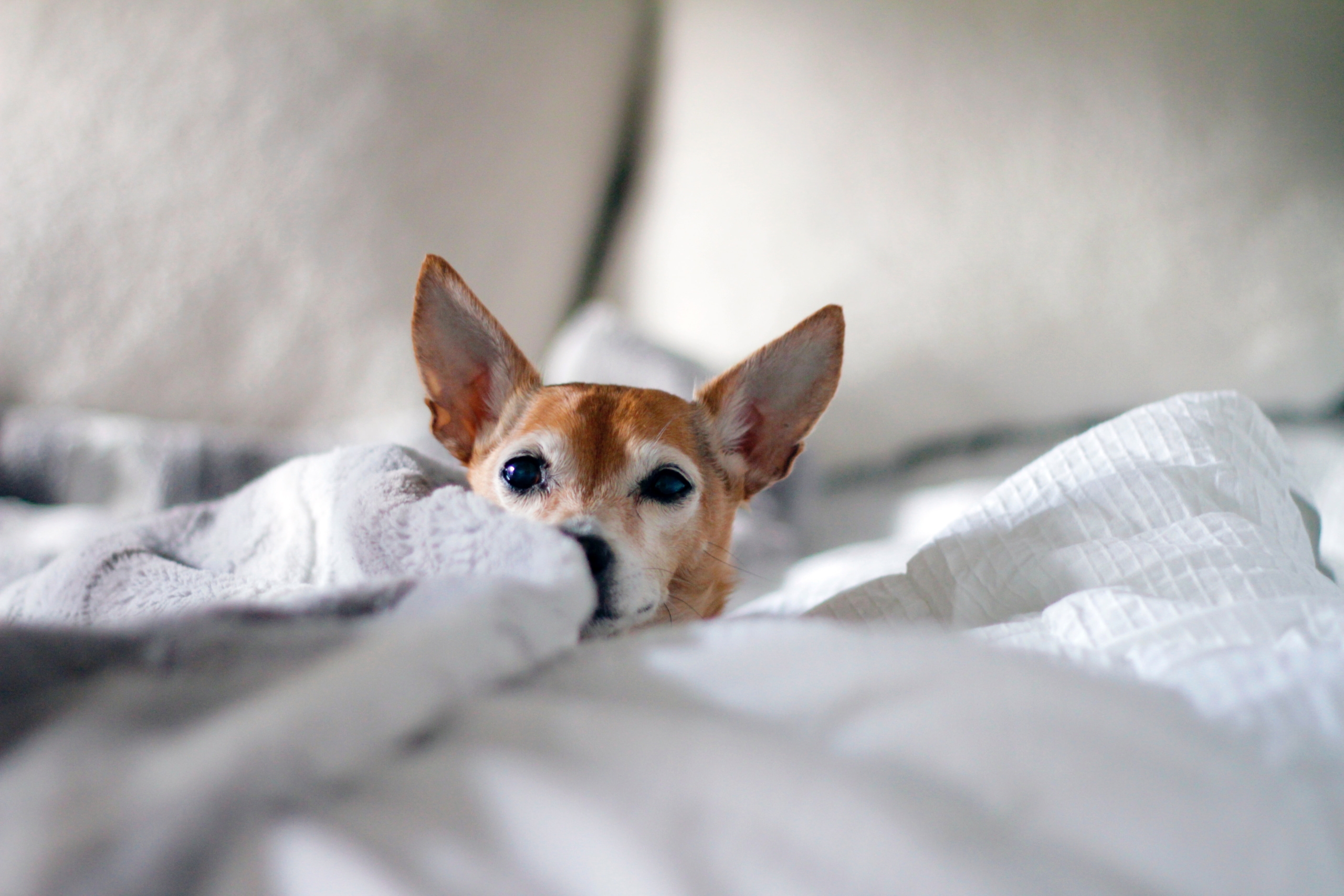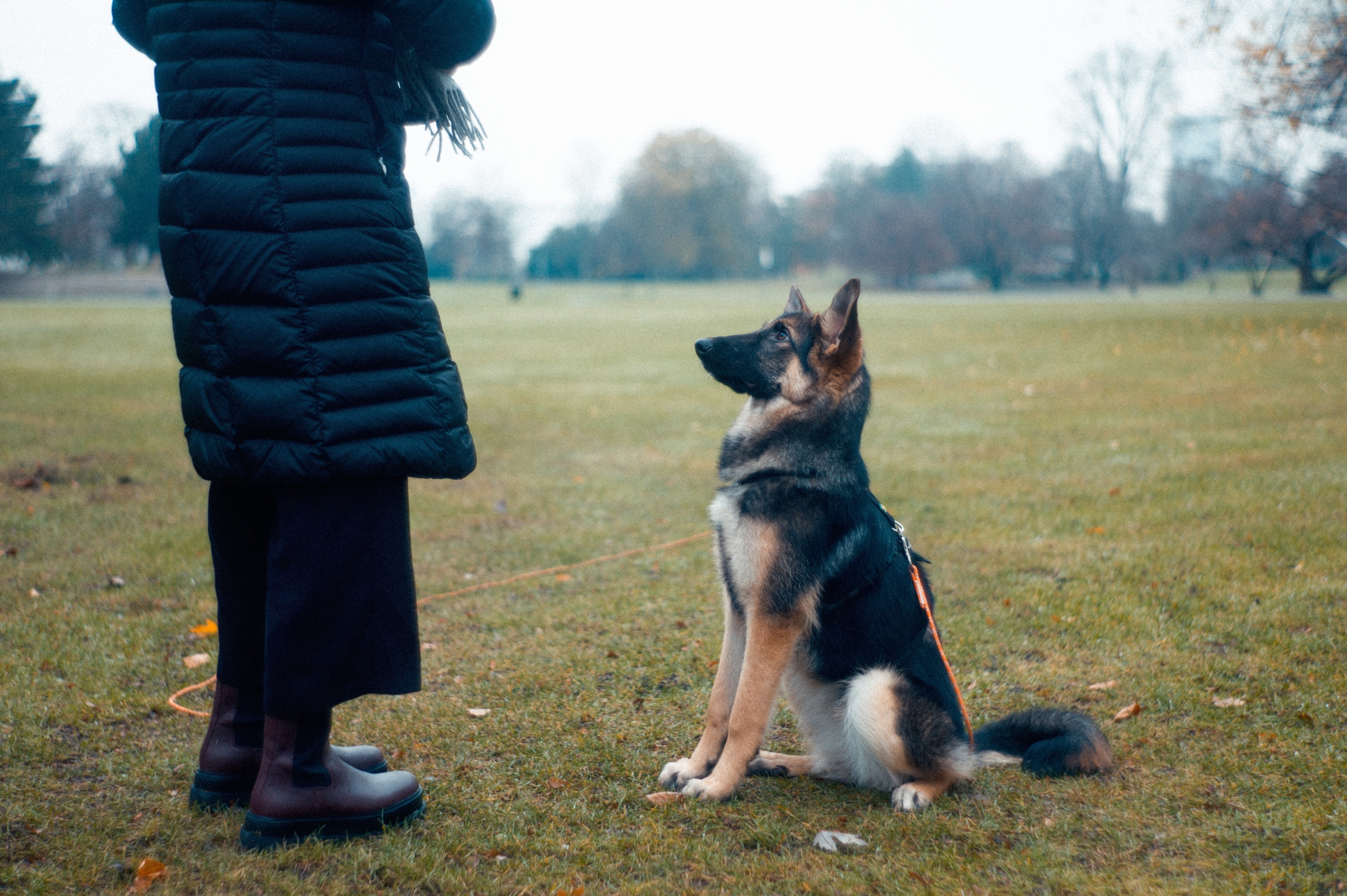Socialising is a key skill for any dog of any age. Typically this involves letting your dog – often a puppy – meet lots of people and dogs…. This can work well for some dogs, but create issues for others. Is this the best way, or are there other options?
What is socialisation for a dog?
Socialisation is not just meeting people and playing with lots of dogs- socialisation is the process of your dog encountering new experiences, people, objects, animals, environments and becoming used to them in a calm way. However, this is not achieved in the way you might expect. Just exposing a dog to new things does not necessarily mean that this is a positive or calm experience. Sometimes, unintentionally, we end up scaring them, or making them so overexcited they cant think and learn. Socialisation is about planning a process of introducing new experiences so that this are positive, but that your dog can experience them in a calm way. This all links to your dog feeling safe.
Normal dog behaviour is to be careful of new things (as they might be dangerous) and to move away if unsure – if necessary a dog will then use ritualised aggression (rushing, lunging, barking and growling) to cause the thing they don’t like the look of to move away. Normal adult dogs are also very vigilant when out – dogs are well designed to scan then environment as part of their evolution. These characteristics are also influenced by their early lives and breeding.
Fortunately, young dogs (up to approximately 5m old) are more curious about new experiences and will move forward to investigate. This then changes at approx. 5-6m as they become more careful and wary. This is all normal dog behaviour. This means that the window from birth – 5m is a really vital time for pups – one that we must maximise to try to create a confident and calm puppy.
The key benefits are
- Confidence to interact with others
- Good social skills
- Good emotional control
- Good capacity to learn
- Good relationships with other humans and animals
Research shows that a puppy at the age of 8-10 weeks has high levels of cortisol (stress hormone) that can make them more anxious, so we have to work carefully on exposure to new things, without overwhelming them. This time is really important due to the impact it can have on the dog for the rest of their life.
How should we socialise for maximum success?
This must be an active and positive experience. It’s a quality over quantity experience. This means not only exposing the dog (carefully) to new experiences, people, places, animals and objects, but making this a planned process which is positive for your dog. If your dog is anxious about something, or doesn’t want to approach – that’s ok! Putting too much pressure on your dog often backfires and makes them more afraid.
Heres an example of neutral versus positive experiences
| Experience | Neutral (can also be experienced as negative) | Positive |
| Adult men | Meets in house | Hand fed by |
| Teenagers | Sees on street | Hand fed by |
| 8-12 year olds | Patted by in park | Hand fed by (treats dropped on the ground) |
| 4-7 year olds | Sees playing in park | Hand fed when near (by owner) |
| Toddlers/babies | Visiting the home | Hand fed when near (by owner) |
| Beards | Sees at a distance | Hand fed by |
| Hats/sunglasses | Sees in the street | Wear whilst playing with the puppy |
| Dancing | May see in the street | Hand fed whilst watching people dance (at home – outside or at a dance class) |
| Crowds | Attends outdoor event | Hand fed whilst at the event (not too busy) |
| People from different ethnicities | May see in the street | Hand fed by people of all ages and ethnicities |
| Traffic | Walked along street | Watch traffic pass and being hand fed near |
| Cats | Sees and sniffs | Hand fed when near |
| Door bell rings | Hears at home | Hears bell ring – hand fed by owner |
| Fireworks | Watching out the window | Play firework sounds and hand fed by owner |
| Vets | Walking in with owner | First few visits carried in – hand fed by staff – sits on owners lap and is hand fed
No treatment is received at all |
Making an experience positive will increase your pups confidence with it – so he will be less likely to be worried and then react as a consequence. Its important to teach your dog that sudden/loud noises are good and not scary as research indicates that noise reactivity can lead to your dog being more reactive to other stimuli as they mature.
What it isn’t..
- letting your dog greet EVERY person and dog they meet – 1 in 3 people and dogs is about right to prevent creating an ‘attention junkie’!
- dragging you towards something to investigate
- letting your dog play wildly with lots of dogs or for prolonged periods of time
- Taking them to a school or boot fair (when its busy) and just letting them ‘get on with it’ – these situations overwhelm lots of dogs
- Not teaching your dog how to cope with loud noises (fireworks, hoover, lorries etc) but thinking they just will
- Encouraging, or making, your puppy engage with something they show reluctance or fear in approaching. This path is highly likely to lead to anxiety and reactive behaviour over time
Patting
Some dogs enjoy being patted (by their owners and strangers), whereas a much larger proportion of dogs tolerate it rather than enjoy it – and some dogs hate it! The disadvantage of us mere humans is that we feel that patting and stroking dogs we don’t know is a friendly gesture – so we approach and reach out our hands. Unfortunately for many dogs, this is a scary experience and one that they actively avoid and work to move away people (by barking, growling or lunging) since this keeps them safe from those patting hands.
Ritualised aggression (such as growling) is completely normal in all dogs and has been actively researched over a prolonged period of time now. It is generally associated as a way of reducing the likelihood of something which is disliked approaching or keeping possession of something that is valuable. Create an active and positive experience – being patted is associated with something the puppy enjoys (like treats), but could also be play.
Distance – and stress!
The important thing in actively socialising is that we use distance from something the dog shows us they are not comfortable with – its not big deal, just walk them further away and then see how the dog feels. If they are happy to stand and watch – that’s perfect!
In class, we will look at how to slowly reduce the distance and make the presence of the ‘thing’ a positive one so your dog grows in confidence.
What experiences do I need to plan in?
Have a look at Leash and Learn online using this link for a wonderful checklist socialisation checklist



